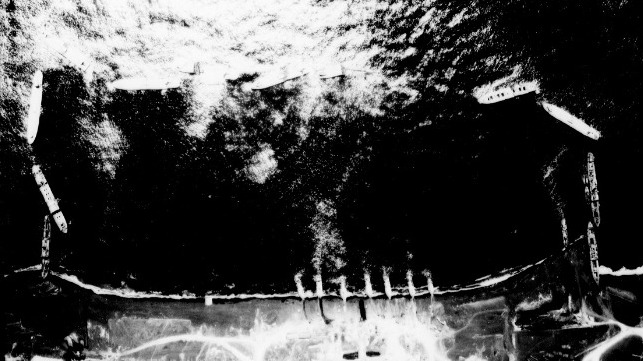As Iwo Jima Rises, a WWII "Harbor" Emerges From the Waves

The assault on Iwo Jima was one of the fiercest battles of the Second World War, and it remains one of the most iconic moments of Marine Corps history. 6,800 U.S. troops died to seize Iwo Jima, and the island - now a protected memorial site - is littered with evidence of the battle. In a strange quirk, that evidence is now rising out of the sea: Iwo Jima is actually the tip of a subsea volcano, and volcanic activity is raising parts of its surface by 10 to 30 inches a year. The beaches where American Marines went ashore are now far above the high tide line, and a collection of ghostly wrecks on the shoreline are on their way to becoming high and dry.
This month, journalists with Japan's Asahi TV news service flew over Iwo Jima during a survey of a new, separate volcanic island that recently formed to the south. They were surprised to see a collection of old, wrecked vessels along the original island's shoreline, and the footage quickly drew attention on social media.
While the grounded ships might look like the wreckage of a contested amphibious assault, their history dates to the months after the American beachhead at Iwo Jima was established. Records maintained by the National Archives show that the Navy Seabees attempted to construct a breakwater on the beach using sunken vessels (blockships), providing a better landing spot for amphibious vessels. The Seabees scuttled 24 ships and barges to create a rectangular "harbor," then reinforced the perimeter with sheet pile and fill. The work was complete by April 30, 1945, well after the battle was over and the island had been declared secure. The small harbor didn't last, however: a typhoon scattered the blockships shortly after construction, and the site was abandoned.

that matters most
Get the latest maritime news delivered to your inbox daily.
Many of the sunken hulks - including concrete-hulled barges, which are less susceptible to corrosion - have remained in the same spot, still forming a rough circle enclosing the beachfront. As the island has risen with volcanic activity, more and more of these ghostly remains have become visible to the eye - and now, they are beginning to emerge from the water altogether, even though they were originally placed at a depth of about 20 feet.
Iwo Jima's uplift has accelerated dramatically since 2010, and the rate of rise in some areas approaches four inches per month. For historic preservation, this may create advantages: while the long-term threat of rising sea levels may affect maritime heritage sites in other parts of the world, Iwo Jima's shores appear to be safe, high and dry.
